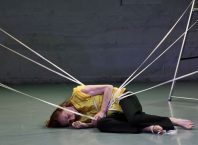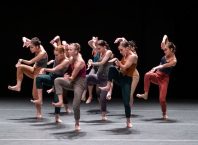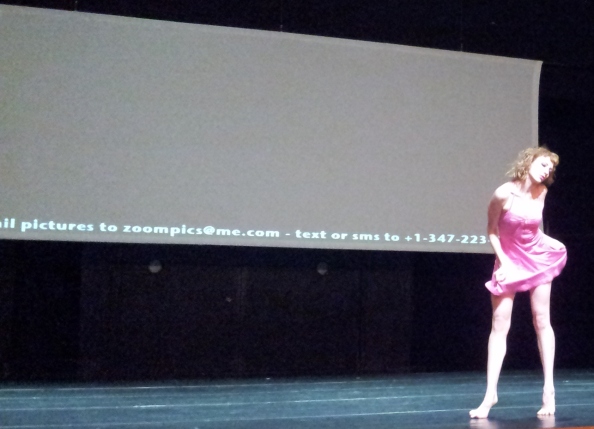
“Hey! Are you coming to my party?” A tall slender dancer in a short pink dress moved seductively on the stage while messages were projected on the wide screen behind her, as the audience walked into the Suzanne Dellal Hall for the performance of ZOOM, choreographed by Zvi Gotheiner with the ZviDance company dancers. Created as an interactive performance, ZOOM presents the possibility of a different kind of dance experience, one in which there is a direct connection between what transpires onstage and the audience.
Much of the traditional framework remains: the dancers perform onstage and the audience sits in the theatre. The choreography appears to be set, with certain junctures open to change depending on the interaction with the audience. However, these are distinct intervals within the evening, and for the most part, this is not an improvised work. There is however, from the start, a strong emphasis on communicating with the audience, who are invited to keep their cell phones on, take pictures of the dancers onstage and email them to the visual designer who would integrate them into the onstage projections.
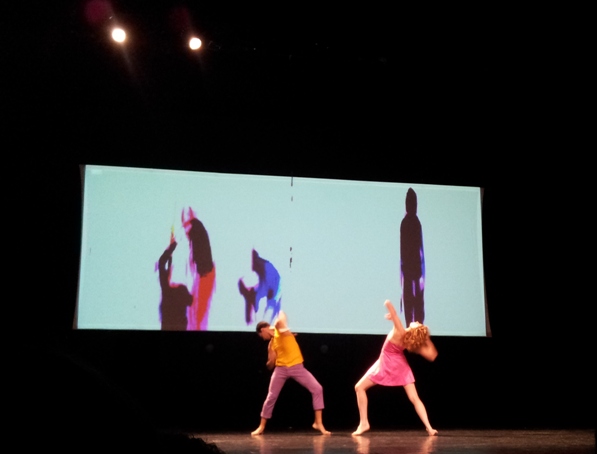
Enticing an audience to participate is far more difficult than one might imagine, audiences are accustomed to just sitting back in their seats waiting to be entertained. I’ve seen many an aspiring participatory performance fall flat due to a frustratingly inert audience. ZOOM confronts the issue directly, going for all out seduction. As the audience entered the theatre, they found a dancer already onstage. Engaging her viewers through a combination of abstract and elegantly performed movement, combined with moments when she faced the audience, posing, sweetly pleading, seductive, as the messages onscreen created her monologue: Don’t you LOVE my new dress, I need new pics like DESPERATELY. Setting a casual tone, as if the 300+ audience members were all new friends (using friends in the internet sense of the word), the messages were accompanied by practical information, providing an email address for sending photos and a phone number for text messages.
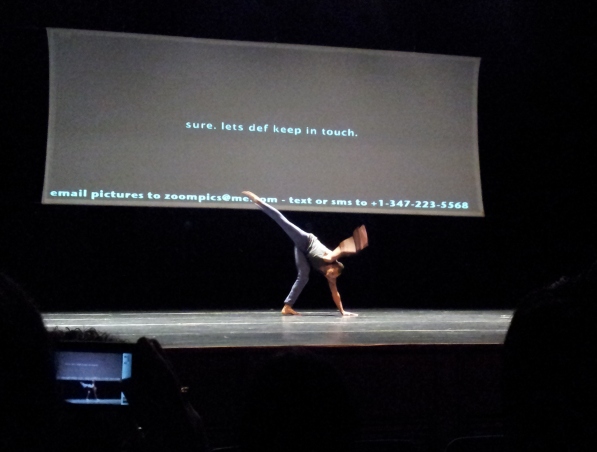
Does it work? Yes and no. It was a lot of fun, the dancers are excellent, and it would have been a pleasure to watch them dance with or without the benefit of technology. The introduction of cell phones and the narrative created through the text onscreen set up a party-like atmosphere, as if this was an encounter at a club. Keeping my cell phone on and active felt very natural, on the other hand, taking photos of the dancers – and perhaps more relevant – trying to email the photos, creates a distraction. In some sense I, as a viewer, did not enter the dance as deeply as I might have were I not taking pictures.
One aspect of the performance which I feel has real potential to take the performance in a different; more intimate direction is the text messaging. At two points in the evening, a dancer sat onstage with a lap top. She texted messages to the audience; shown on the large screen, inviting people to text her back. Like many other technological adventures, this one, apparently, had a few glitches. There were few messages from the audience, which meant that the plot did not move – there wasn’t really any action here. My assumption, at first, was that people were hesitant to send messages. After the performance I heard many people talking about having sent text messages that were not shown on the screen – so there must have been some glitches in transit. One message, with its reference to the choreographer’s past history in Israel, which could have developed into an interesting conversation – “Hey Zvi, NY is so far from Remle” – didn’t really take off as it might have if the dialogue was with Gotheiner rather than one of the dancers.
One might imagine different evenings, different encounters and different outcomes for this performance. Reflecting a certain contemporary sensibility, the work ends on a subdued note, perhaps a commentary on relationships in a time with so many means of communication and so much unrequited desire for connection: Guess I missed you again was hoping to catch you…I’ll keep my phone on just in case…

